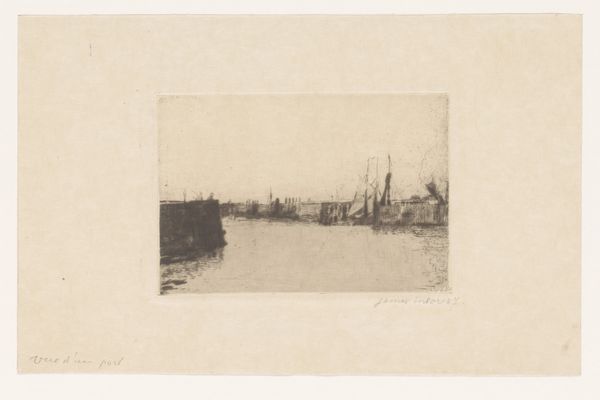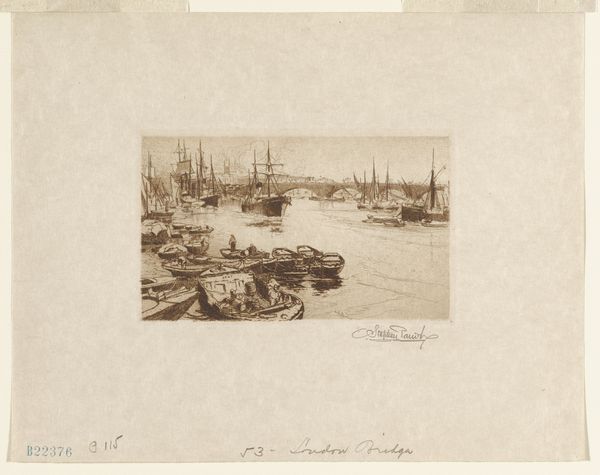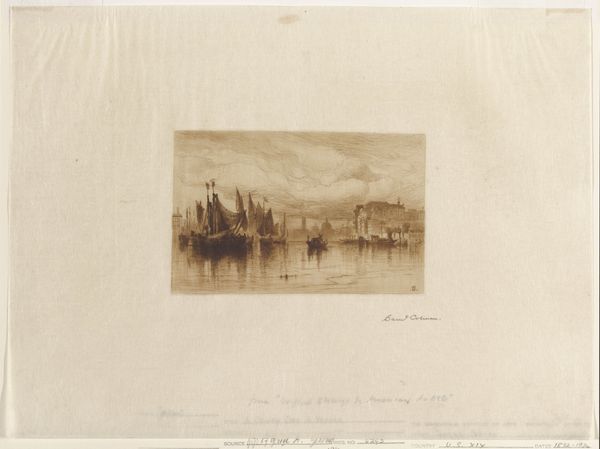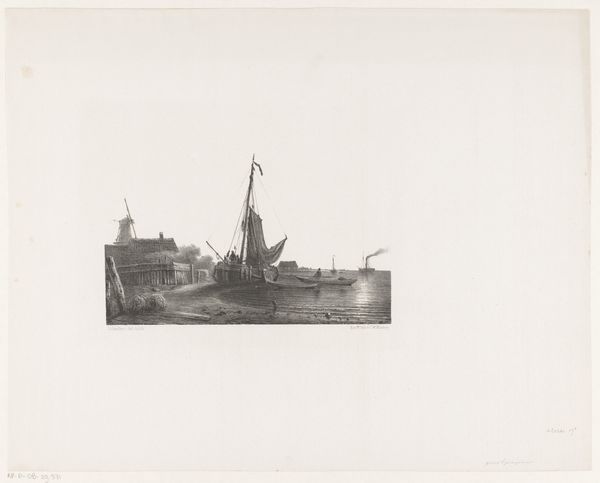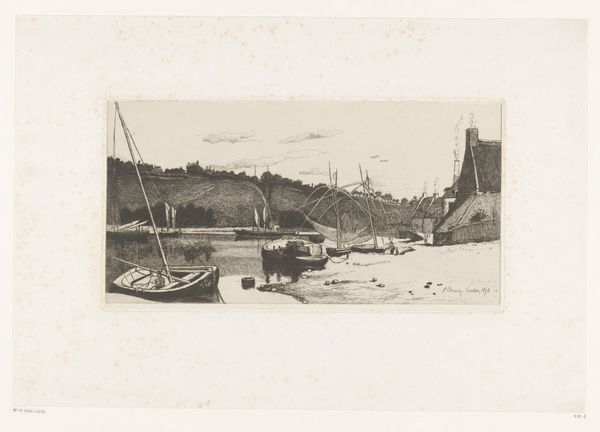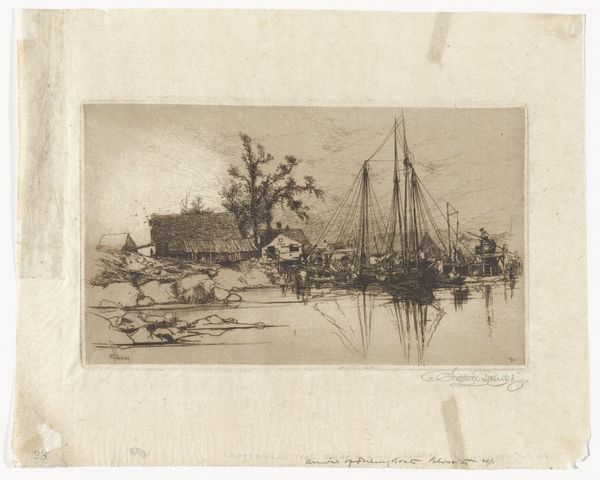
print, etching
# print
#
etching
#
landscape
#
etching
#
romanticism
#
orientalism
#
cityscape
Dimensions: 5 7/8 x 11 3/8 in. (14.92 x 28.89 cm) (plate)13 1/2 x 17 9/16 in. (34.29 x 44.61 cm) (sheet)
Copyright: Public Domain
Charles A. Vanderhoof made "The Thames at Limehouse" using etching, a printmaking process steeped in history. The image begins its life as a drawing on a metal plate, likely copper or zinc. The artist would have used a sharp needle to scratch through a waxy coating, exposing the metal beneath. That plate is then submerged in acid, which bites into the exposed lines, creating grooves. Ink is then forced into these grooves, the surface wiped clean, and the image transferred to paper under immense pressure. Look closely, and you can see the velvety texture of the ink, and the way the acid has created a range of tones, from the deepest shadows to the lightest highlights. The linear quality of the etching process lends itself well to the industrial setting, the boats, the architecture, capturing the gritty atmosphere of London’s working waterfront. While etching has long been considered a fine art technique, its roots lie in the world of craft and industry. In Vanderhoof's hands, this traditional method captures the realities of labor and industry along the Thames, challenging any strict separation between art and the everyday.
Comments
No comments
Be the first to comment and join the conversation on the ultimate creative platform.


